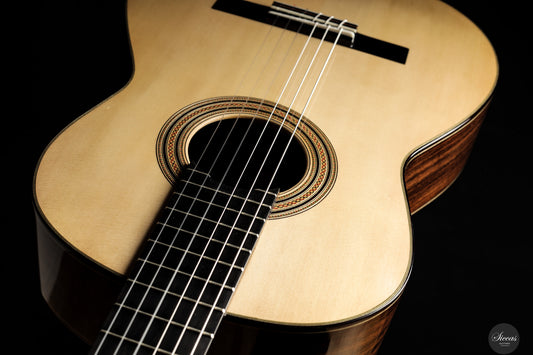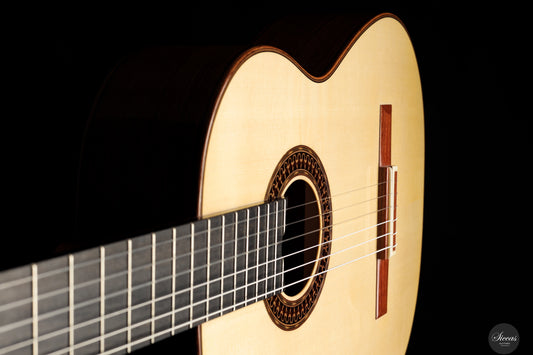Sold
Walter Verreydt - Martina Gozzini - 2018 - Rondine No.04
Walter Verreydt - Martina Gozzini - 2018 - Rondine No.04
Details
Details
Luthier:
Walter Verreydt - Martina Gozzini
Overview
Overview

























Video overview
Some text about the video block with SEO. Some text about the video block with SEO.


More details about the guitar
About the luthiers
Walter Verreydt, one of Belgium’s most respected luthiers, built his first guitar in 1985, transitioning from a career as a woodworking teacher to a full-time guitar maker. Since 1988, he has taught classical guitar construction at the Centrum voor Muziekinstrumentenbouw in Puurs, Belgium. Verreydt draws influence from historical masters such as Ignacio Fleta, Robert Bouchet, and Hernández y Aguado, and he has benefited from close relationships with Daniel Friederich and José Romanillos. His guitars are built in the Spanish tradition and are celebrated for their refined tone, aesthetic clarity, and meticulous construction. This guitar was built in collaboration with Martina Gozzini as part of the limited “Rondine” project, in which only five instruments were made. The aim was to create an original instrument that combined traditional craftsmanship with a modern approach to design and sound. The result is a guitar that merges the experience of the master with the fresh perspective of a rising luthier. Martina Gozzini was born in Florence. She holds a degree in musicology from the University of Bologna and is a graduate of the Centrum voor Muziekinstrumentenbouw in Puurs, Belgium, where she specialized in steel-string instrument making and later served as general coordinator until 2020. In her workshop, she focuses on traditional American acoustic instruments such as mandolins, banjos, and steel-string guitars, as well as the “Rondine” classical guitar project.About the guitar
The Rondine No. 04 is a limited-edition concert guitar, one of only five instruments created through the collaborative “Rondine” project. Designed and built by Walter Verreydt and Martina Gozzini, this model reflects a distinctive blend of tradition and originality. The plantilla was newly designed for this guitar, loosely inspired by Torres, and paired with Verreydt’s refined lattice bracing to achieve a voice that is both powerful and artistically nuanced. The spruce top and premium Madagascar rosewood back and sides are framed by maple bindings that add visual precision and elegance. The aesthetic concept is rooted in contrast, with a monochrome theme seen in the ebony and maple rosette, mosaic tie-block, and polished ebony headplate. Even the Sloane tuners, fitted with ebony buttons, echo this black-and-white interplay. The name “Rondine” (Italian for “swallow”) reinforces this visual metaphor of light and dark in motion. Tonally, the guitar exhibits great projection and responsiveness, with airy trebles, clearly defined midrange, and deep, balanced basses. The fast attack and wide range of tonal colors make this instrument especially well suited to expressive, high-level performance. At just 1550 grams, it is light and effortless to play, offering both elegance and acoustic substance. Finished in French polish and executed to the highest standard, the Rondine No. 04 is a testament to the artistry and collaboration of two luthiers across generations.Condition
This guitar is in excellent condition and has been carefully preserved. It shows only minimal signs of previous use and remains structurally and acoustically pristine.
Otto Rauch is a German guitar maker from the small town of Obermoschel in Rheinland-Pfalz. With over 35 years of experience as a guitar maker, he is one of the German pioneers of double-top construction. After repairing a Matthias Dammann guitar in the early 1990s, Otto Rauch began building doubel-top guitars. At first, he used cedar struts and then a balsa core, a construction he continued to develop over the years. While helping a friend set up his violin making business, Otto Rauch came across the name of the 18th century Venetian violin maker Domenico Montagnana. His cellos are praised for their dark tone, fantastic sound volume and enigmatic construction. As these three attributes reflect Otto’s construction, he adopted the name, and the Domenico Montagnana model was born.









































































